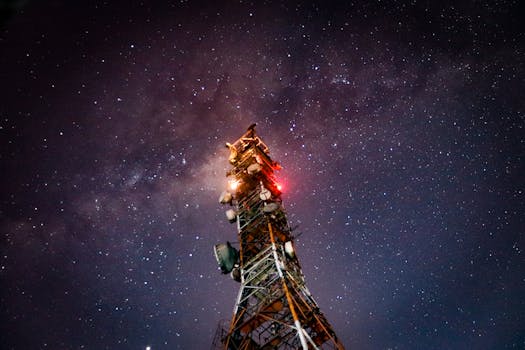
MEO Satellites: Revolutionizing Global Communication with Medium Earth Orbit Technology
MEO satellites, or medium earth orbit satellites, are a type of satellite that operates in a medium earth orbit, which is approximately 2,000 to 36,000 kilometers above the earth’s surface. This orbit is higher than low earth orbit (LEO) satellites but lower than geostationary orbit (GEO) satellites. MEO satellites are designed to provide a unique combination of coverage, capacity, and latency, making them ideal for a variety of applications, including global communication, navigation, and earth observation.
MEO satellites have several advantages over traditional GEO satellites. One of the main benefits is their lower latency, which is the time it takes for a signal to travel from the earth to the satellite and back. MEO satellites have a latency of around 50-100 milliseconds, compared to GEO satellites which can have a latency of up to 500 milliseconds. This makes MEO satellites more suitable for real-time applications such as video conferencing, online gaming, and voice over internet protocol (VoIP).
How MEO Satellites Work
MEO satellites work by using a network of satellites in medium earth orbit to provide coverage of the entire earth. Each satellite is equipped with a transponder, which is a device that receives and retransmits signals. The satellites are designed to communicate with each other and with ground stations, allowing them to provide a seamless and continuous service to users. MEO satellites can be used for a variety of applications, including broadband internet, mobile communications, and navigation.
MEO satellites are also more resistant to interference and jamming than GEO satellites. This is because they are higher up and have a wider footprint, making it more difficult for signals to be disrupted. Additionally, MEO satellites can provide more precise location information than GEO satellites, making them ideal for applications such as precision agriculture and emergency response.
Applications of MEO Satellites
MEO satellites have a wide range of applications, including global communication, navigation, and earth observation. One of the main uses of MEO satellites is for broadband internet, where they can provide high-speed internet access to remote and underserved areas. MEO satellites can also be used for mobile communications, such as providing cellular network coverage to areas where traditional cellular networks are not available.
MEO satellites are also used for navigation, such as providing location information for aircraft, ships, and vehicles. They can also be used for earth observation, such as monitoring weather patterns, tracking climate change, and detecting natural disasters. Additionally, MEO satellites can be used for scientific research, such as studying the earth’s atmosphere and monitoring the effects of space weather.
Future of MEO Satellites
The future of MEO satellites looks bright, with many companies and organizations investing in the development of new MEO satellite constellations. One of the main drivers of this investment is the growing demand for global communication and navigation services. As more people and devices become connected to the internet, the need for fast and reliable communication services will continue to grow, making MEO satellites an attractive option.
Another driver of investment in MEO satellites is the development of new technologies, such as advanced propulsion systems and more efficient transponders. These technologies will make it possible to build more powerful and efficient MEO satellites, which will be able to provide even faster and more reliable services to users. Additionally, the development of new applications, such as the internet of things (IoT) and autonomous vehicles, will also drive demand for MEO satellites.
